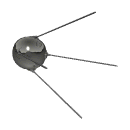NewYorkScienceTeacher.com presents...
The Physics of Christmas
Click here for a printer friendly version of this list
To link to this page, use the URL below:
http://www.newyorkscienceteacher.com/holidays/
 1. No known species of reindeer can fly (there are 300,000 organisms yet to be classified, most are insects and germs, this does not rule out flying reindeer)
1. No known species of reindeer can fly (there are 300,000 organisms yet to be classified, most are insects and germs, this does not rule out flying reindeer)
 2. There are about 2 billion children (persons under 18) in the world.
2. There are about 2 billion children (persons under 18) in the world.
3. “Santa” doesn't (appear) to handle the Muslim, Hindu, Jewish and Buddhist children.
4. This reduces the workload to 15% of the total - 300 million kids.
5. On average, there are 3.5 children per household.
6. That's 85.7 million homes.
7. One presumes there's at least one good child in each.
 8. Thanks to the different time zones and the rotation of the earth, Santa has 31 hours of Christmas to work with (assuming he travels east to west).
8. Thanks to the different time zones and the rotation of the earth, Santa has 31 hours of Christmas to work with (assuming he travels east to west).
9. This works out to 768 visits per second.
 10. This means Santa has 1/1000th of a second to park, hop out of the sleigh, jump down the chimney, fill the stockings, distribute the remaining presents under the tree, eat whatever snacks have been left, get back up the chimney, get back into the sleigh and move on to the next house.
10. This means Santa has 1/1000th of a second to park, hop out of the sleigh, jump down the chimney, fill the stockings, distribute the remaining presents under the tree, eat whatever snacks have been left, get back up the chimney, get back into the sleigh and move on to the next house.
11. Assuming each stop is evenly distributed (which we know to be false), we are talking about 0.8 miles per household, a total trip of 75.5 million miles.
12. This is not counting stops to do what most of us must do at least once every 31 hours.
13. This means that Santa's sleigh is moving at 677 miles per second.
14. That is 3,385 times the speed of sound (0.2 miles/second).
 15. The fastest man-made vehicle is the Helios 2 (launched April 17, 1976) space probe which moves at 41.7 miles per second.
15. The fastest man-made vehicle is the Helios 2 (launched April 17, 1976) space probe which moves at 41.7 miles per second.
16. A conventional reindeer can run, tops, 15 miles per hour.
 17. Assuming that each child gets nothing more than an Apple 4 GB iPod nano (1 pound), the sleigh is carrying 150,000 tons (US), not counting Santa, who is invariably described as overweight.
17. Assuming that each child gets nothing more than an Apple 4 GB iPod nano (1 pound), the sleigh is carrying 150,000 tons (US), not counting Santa, who is invariably described as overweight.
18. On land, conventional reindeer can pull 300 pounds.
19. Assuming that "flying reindeer" could pull TEN TIMES the normal amount; we cannot do the job with eight, or even nine.
20. We need 100,000 reindeer. This increases the payload - not even counting the weight of the sleigh to 176,065 tons.
21. This is 1.8 times the weight of the Nimitz-class aircraft carrier.
 22. 176,715 tons traveling at 650 miles per second creates enormous air resistance, which will heat the reindeer up in the same fashion as spacecraft re-entering the earth's atmosphere.
22. 176,715 tons traveling at 650 miles per second creates enormous air resistance, which will heat the reindeer up in the same fashion as spacecraft re-entering the earth's atmosphere.
23. Each lead pair of reindeer will absorb 7.2 x 1018 joules of energy per second.
24. In short, they will burst into flames almost instantaneously creating deafening sonic booms in their wake. The entire reindeer team will be vaporized within 0.004 seconds.
 25. Santa, meanwhile, will be subjected to centrifugal forces 17,500 times greater than gravity. A 250-pound Santa (which seems ludicrously slim) would be pinned to the back of his sleigh by 4,315,015 pounds of force.
25. Santa, meanwhile, will be subjected to centrifugal forces 17,500 times greater than gravity. A 250-pound Santa (which seems ludicrously slim) would be pinned to the back of his sleigh by 4,315,015 pounds of force.
Adapted from: The Physics of Christmas: From the Aerodynamics of Reindeer to the Thermodynamics of Turkey , SPY Magazine January, 1990 and by Chris Sheehan (newyorkscienceteacher.com)